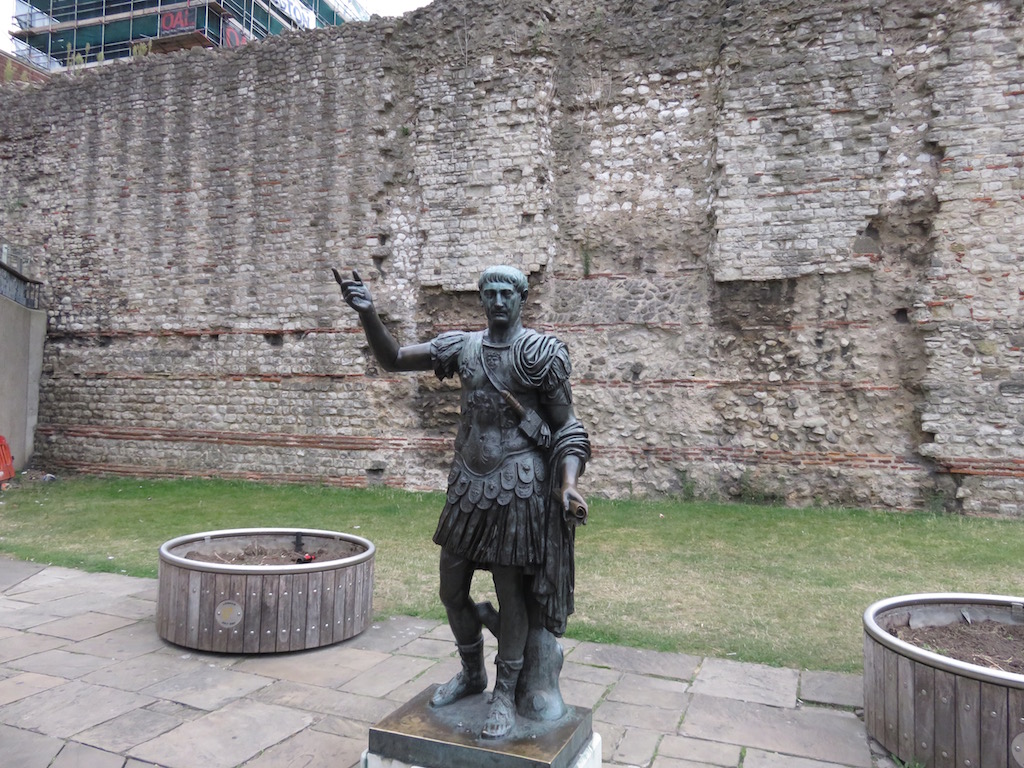Finding the Roman footprints in a global metropolis that began as a Roman town can be a challenge. As in Paris, (Looking for Lutetia), most of London’s Roman era is buried beneath 2000 years of habitation. And what a habitation it has been.

Unlike Paris, it took me a couple of trips to find most of the bits and pieces. I’m sure I’ve missed some but I think I found the main ones. In 2011, I did a walking tour of the City of London, the square mile area in London which grew out of the Roman town. I took in the Museum of London which illustrates the history of London. From the museum there are remnants of the Roman town walls that extended to the Thames River.

I also managed to find the Mithras temple on Queen Victoria Street. It has since been dug up and will not be on display until the Bloomberg building, where it will reside, opens in 2018. It will have a much better display there than it had where I found it.

Over near the Westminster Bridge, I found a statue of Boudica and her daughters. Not Roman, of course, as she was an enemy of the Romans and laid waste to several of their early towns in Britannia. But a heroine of the Victorians because she rebelled against the invading Romans.

Fast forward to the autumn of 2016, when I came looking for a few more Roman sites. This time I found the amphitheatre beneath the Guildhall.

And the end of the Roman town wall at the Tower of London, along with a statue of Trajan.

At the end of the day, I dined at the newly opened Roma restaurant not too far away from the Tower of London. Their dishes are inspired by ancient Roman recipes. It was a delicious finale to my hunt for Londinium.


